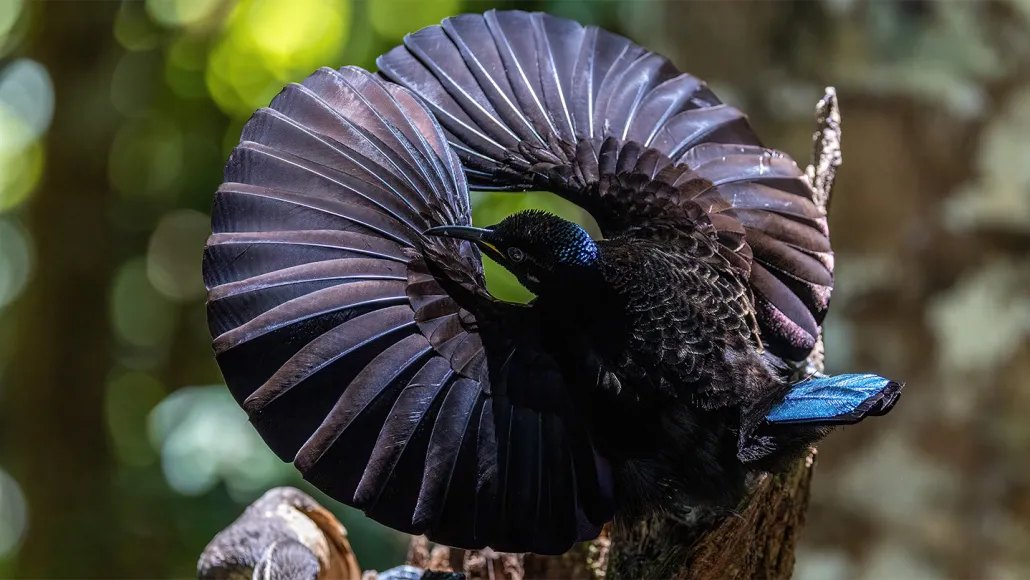These birds of paradise take wrist bending to extremes and play percussion on their feathers
A newly captured video reveals the secrets behind male riflebirds’ striking wrist movements and feather-produced sounds that make their displays so mesmerizing. The males of the Ptiloris genus—birds of paradise native to Australia and New Guinea—have long captivated both female birds and biologists with their elaborate courtship rituals. These performances involve the males fanning their dark, velvety wing feathers into an arc, swaying their heads rhythmically, and producing sharp, percussive “thwacks.”
For years, scientists were puzzled by the source of these distinctive sounds. Initially, researchers believed that riflebirds clapped their wings together, a behavior observed in some bird species. However, a team led by Thomas MacGillavry, a zoologist at the University of Veterinary Medicine in Vienna, has uncovered the true mechanism. In their September publication in the Biological Journal of the Linnean Society, they report that riflebirds use their beaks to strike their feathers, akin to playing a musical instrument.
The research team obtained new footage of a male Victoria’s riflebird (Ptiloris victoriae) and analyzed specimens of other riflebird species. As the male moves his head, he intermittently closes his beak, briefly concealing his brilliant yellow throat. His beak strikes the feathers in quick succession, like a stick running along a picket fence. This “drumming” motion is made possible by an extraordinary feature: the male’s fanned feathers curve inward, forming a striking arc reminiscent of a cape. Achieving this requires an exceptionally flexible wrist.
According to MacGillavry, this wrist flexibility is comparable to a bodybuilder showing off by flexing their muscles. However, unlike humans, riflebirds have their elbow-like joints hidden beneath other tissues, and it is the wrist that bends dramatically. The wrist of a deceased Victoria’s riflebird was found to flex up to an astonishing 237.1 degrees, with some other Ptiloris species exhibiting even greater flexibility—something unseen in any other bird species known to science.
